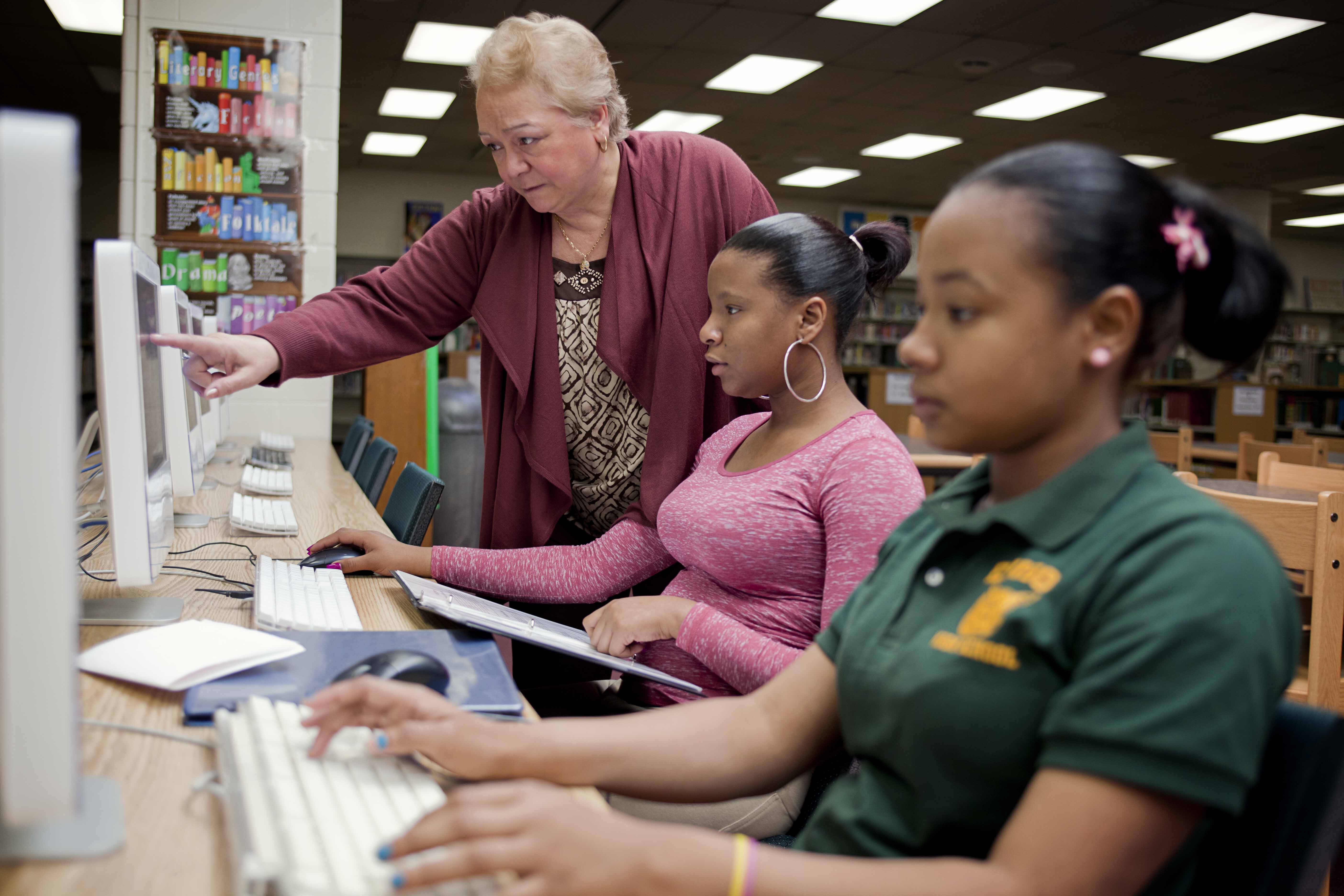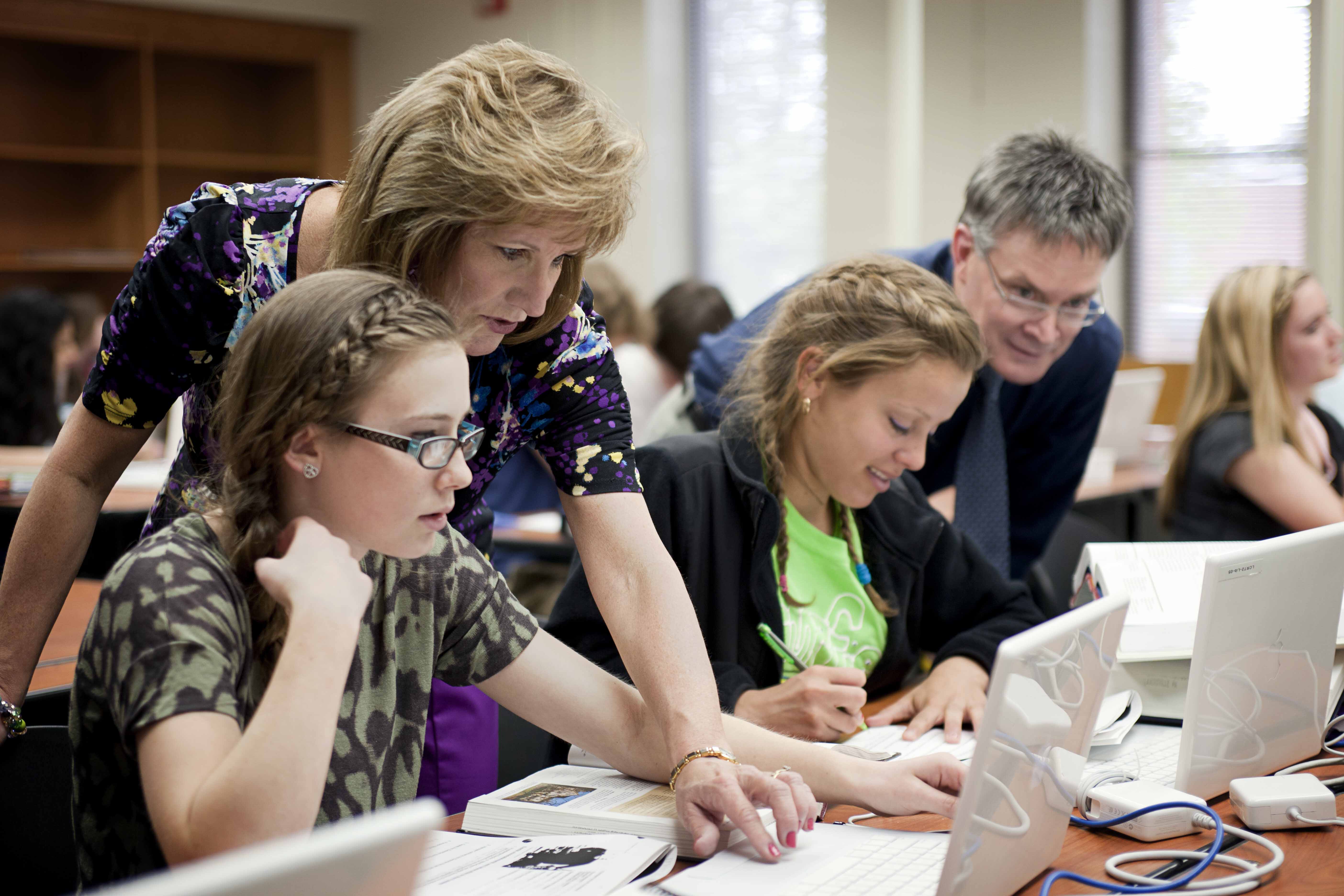District Profiles
{{title}}
{{ geographyHeaderText }}
View results by:
OR
|
Select:
OR
Choose Your Data
{{ submitTabMessage }}
Loading Profile Data...
School Library
District Profile
{{ featuredName }}, {{ featuredState }}



At a Glance
{{ activeYear }} School District Statistics
- {{ numSchoolsFormatted }} Schools
- {{ numStudentsFormatted }} Students
- {{ numLibrariansFormatted }} Librarians in Full-Time Equivalents (FTEs)
- {{ numLibsPerSchool }} Librarian FTE Per School
- {{ numStudentsPerLib }} Students Per Librarian FTE
- {{ numTeachersperLibrarian }} Teachers FTE Per Librarian FTE
National Center for Education Statistics (NCES) data accessed from https://libslide.org/data-tools/
School Librarian FTEs, 2017-18 to 2023-24
{{ featuredName }}, {{ featuredState }}
Employment Trends by Educator Type, Percent Change from 2017-18 {{ featuredName }}, {{ featuredState }}
Today, the role of school librarian includes teaching students media literacy, Internet safety, and digital citizenship, assisting teachers in designing and delivering lessons and selecting resources and integrating technology into the curriculum, in addition to managing collections and encouraging reading.
How school librarian losses are impacting those students who likely need their services the most should be of major concern to education policy makers.
The School Librarian Investigation—Decline or Evolution?
Kachel & Lance, 2022
School Library Impact Research
Multiple studies have found that test scores tend to be higher in schools where librarians spend more time:
- Instructing students, both with classroom teachers and independently;
- Planning collaboratively with classroom teachers;
- Providing professional development to teachers;
- Meeting regularly with the principal;
- Serving on key school leadership committees;
- Facilitating the use of technology by students and teachers;
- Providing technology support to teachers, and
- Providing reading incentive programs.
Several library impact studies suggest test scores tend to be higher where administrators, teachers, and librarians themselves think of the school librarian as a school leader; as a teacher, co-teacher, and in-service professional development provider; as a curriculum designer, instructional resources manager, and reading motivator; and as a technology teacher, troubleshooter, and source of instructional support. (Lance & Kachel, 2018)
SLIDE REPORTS, WEBSITE & DATA TOOLS
K.C. Lance, D.E. Kachel, L. Breevoort, C. Gerrity, & D. Ellis. (2023, August). Voices of decision-makers: how district & school leaders decide about school librarian employment. SLIDE: The School Librarian Investigation—Decline or Evolution? https://libSLIDE.org/publications/voices
K.C. Lance & D.E. Kachel (August 2022). The COVID-19 Pandemic & Inequities in Access to School Librarians: A SLIDE Special Report. https://libslide.org/pubs/Pre-Post-COVID-Analysis-Special-Report.pdf.
K.C. Lance & D.E. Kachel (July 2021). Perspectives on School Librarian Employment in the United States, 2009-10 to 2018-19. https://libslide.org/publications/perspectives/.
K.C. Lance & D.E. Kachel (March 2018). Why school librarians matter: what years of research tell us. Phi Delta Kappan. https://kappanonline.org/lance-kachel-school-librarians-matter-years-research/.
The School Librarian Investigation—Decline or Evolution? (SLIDE) website. https://libslide.org.
Data Tools: https://libslide.org/data-tools/.
| District | |
|---|---|
| {{ featuredDistrictName }} |